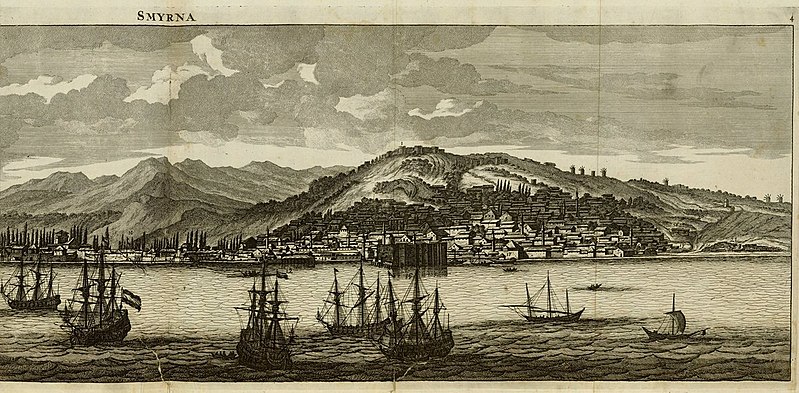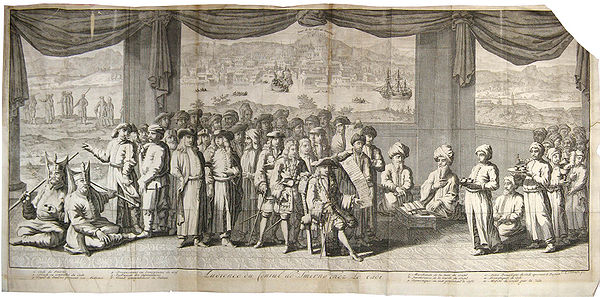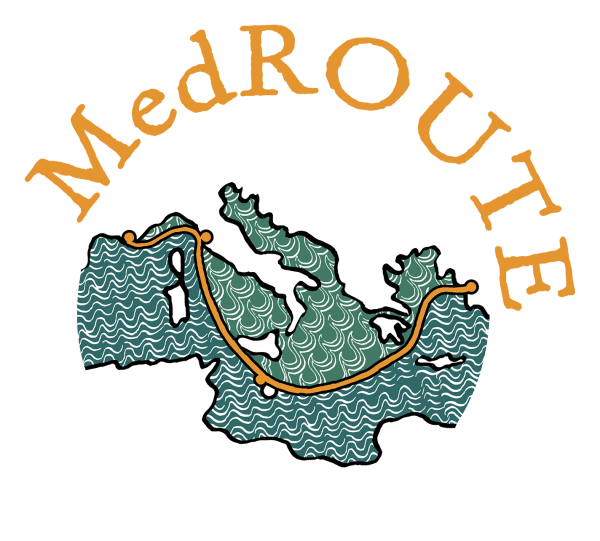Gavour Izmir, Izmir the Infidel. This is how the Ottomans defined the city, the infidel one par excellence, due to the high number of non-Muslims among its inhabitants.

Izmir is not a typical Ottoman city because it was strongly shaped by its European presence. The interplay of Europeans with the local administration and the non-Muslim Ottoman subjects is what makes Izmir – from the 17th century onward – the most important port of the Levant. The possibility given by the Ottoman state to difference, perceived as a resource and not as a danger, foster the vibrant multiculturalism of the city, together with its richness.
Following the best description of premodern Izmir provided by Antoine Galland in the 1770s, the inhabitants of the city could be divided into two main groups: the ‘autochthonous’, and the Franks. The first group included the Ottoman subjects: Turks, Greeks, Armenians, and Jews. The second group comprised all the
chrétiens qui viennent d’Europe dans le terres du Grand Seigneur – ne sont pas compris dans le dénombrement que j’ai fait des habitants de Smyrne (Turcs, Grecs, Arméniens etJuifs). Ils sont ou Français, ou Anglais, ou Hollandais, ou Vénitiens, ou Génois.
Antoine Galland, Le voyage à Smyrne. Un manuscrit d’Antoine Galland, 1678. Contenant Smyrne ancienne et moderne et des extraits du Voyage fait en Levant, edited by Frédéric Bauden (Paris : Chandeigne, 2000), p. 113.
The Turks inhabited the upper part of Izmir, while Franks and non-Muslim Ottoman subjects had their quarters in the lower part, the port area, as they were involved in city commerce. For this reason, the long street along the waterfront was called Frank Street and Europeans organized both their professional and private lives and social activities around this area.
Those traveling to Izmir were always attracted by the possibility of living a European-style life in the Ottoman city. This fact was not only formal, it was substantial. By this, I mean that this opportunity was not only a question of appearance: Europeans felt at home in Izmir. This perception is wonderfully conveyed by the French traveler (and prototype of the voyageur-philosophe) Joseph Pitton de Turnefort who, describing Franks Street, wrote:
When we are in this Street, we seem to be in Christendom; they speak nothing but Italian, French, English or Dutch there. Everybody takes off his Hat, when he pays his respects to another. There one sees Capuchins, Jesuits, Recolets […] They sing publickly in the Churches […] and perform Divine Service there without any trouble […] Taverns are open all Hours, Day and Night.
Joseph Pitton de Tournefort, A voyage into the Levant, perform’d by command of the late French king, vol. III, (London: D. Browne, A. Bell, J. Darby [and 8 others], 1718), p. 336.
In the MedRoute perspective, this passage is crucial. It identifies as the principal elements of Europeanness the habits of eating and drinking resembling those in Europe (‘Taverns are open all Hours…’), dressing in European elements of style (‘Every body takes off his Hat…’), and speaking one’s own mother tongue (‘they speak nothing but Italian, French, English or Dutch’). In other words, Izmir seemed familiar to Pitton the Tournefort because there things could be done as they were in Europe. Many other travelers have highlighted this consistency in everyday life with that of their own motherland.
Speaking about the English nation of Izmir, Antoine Galland noted that there were also ‘trois taverniers’ while several ‘tailleurs’ were members of the French nation. If the need to dress like Europeans was also enforced by the Ottoman prohibition against foreingners dressing like Turks, it is very significant that alcohol was easily accessible to those ‘chrétiens qui viennent d’Europe dans le terres du Grand Seigneur’.

Alcohol consumption was indeed very common even among Ottoman subjects. Galland wrote extensively about each nation’s drinking habits, noting the Greek customs of having a miso (a half), that is of drinking a kind of brandy (probably what would nowadays be called a tsipouro); Jewish people produced their own wine (‘Les Juifs ne boivent pas du vin fait par des chrétiens’), while the English, ‘aussi si accotumés à la bière’, imported it from England and tried to produce it in Izmir – ‘mais elle n’est pas si bonne que celle de leur pays.’ The policy of the Ottoman state that had authorized diversity from the perspective of the inclusion of non-Muslim subjects reached its peak with the Franks of Izmir. From this perspective, Galland’s division between the autochthonous and the Franks retains a different meaning. In fact, historians who have focused on the study of everyday life in the Ottoman Empire tend to detect, beyond the undeniable differences, a general degree of standardization of domestic life between different Ottoman groups, resulting in what Suraja Faroqui a ‘basic similarity across religious divides’ (Faroqhi, 2005). As a result, non-Muslim subjects were strongly influenced by Ottoman culture, a fact that can nowadays be easily detected in the heritage of Ottoman gastronomy in the cuisines of Balkan and Middle Eastern countries. The process of acculturation of the Franks took different forms – that I define as Levantinization – and was fairly absent from the material life of premodern Izmir. In this context, one important exception is the practice of speaking multiple languages, often linked to mixed marriages. Europeans – especially those married to ‘autochthonous’ people – became increasingly involved in bilingualism and code switching.


 Medroute is funded by the European Union (Grant n. XXXXXXXXX) through Marie Curie Action.
Medroute is funded by the European Union (Grant n. XXXXXXXXX) through Marie Curie Action.